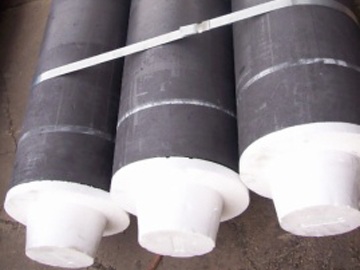
Graphite electrode is a kind of graphite conductive material with high temperature resistance. Graphite electrode is mainly made of oil-based or coal-based needle coke and coal tar pitch. The technological process of graphite electrode production includes mixing, molding, roasting, asphalt impregnation, re roasting, graphitization and machining. Graphite electrode can conduct current and generate electricity, so as to melt scrap iron or other raw materials in blast furnace to produce steel and other metal products. It is mainly used to make steel. Graphite electrode is the only material with low resistivity and withstanding thermal gradient in electric arc furnace. The main characteristics of graphite electrode production are long production cycle (usually lasting for three to five months), large power consumption and complex production process.
From 2014 to 2019, the global output of graphite electrode excluding China decreased from 800000 tons to 710000 tons, with a CAGR of – 2.4%. In 2019, the output of ultra-high power graphite electrodes outside China accounted for about 90% of the total output of all graphite electrodes in the world except China. In 2019, due to the demolition of low capacity plants, long-term environmental rectification and reconstruction, the production capacity outside China decreased, resulting in the continuous reduction of output outside China. The gap between output and consumption depends on China’s export of graphite electrodes.
